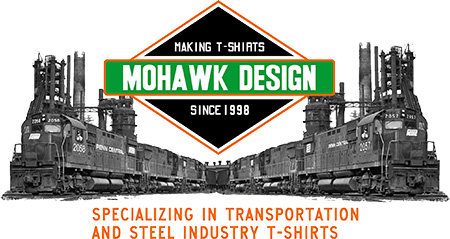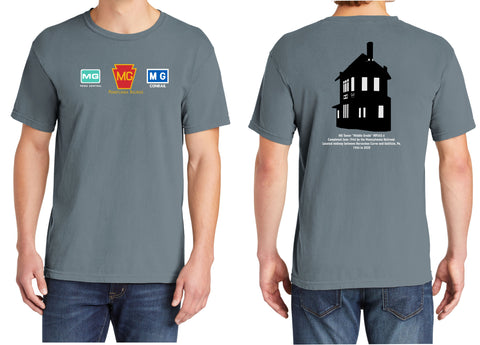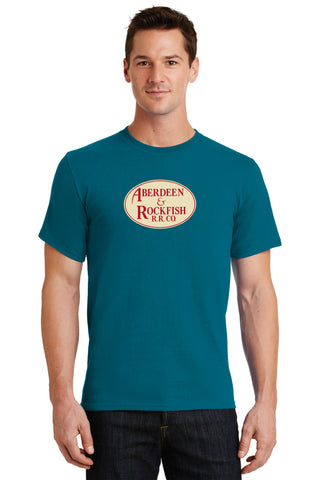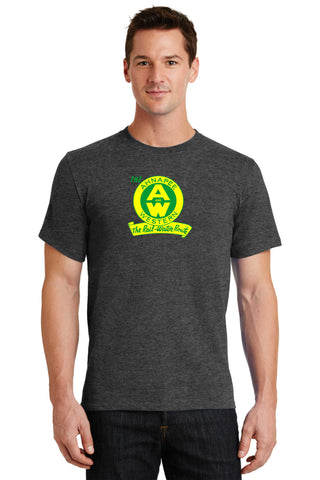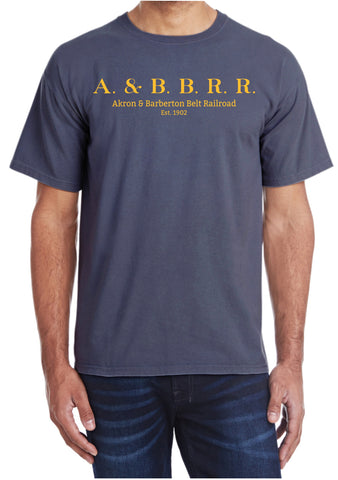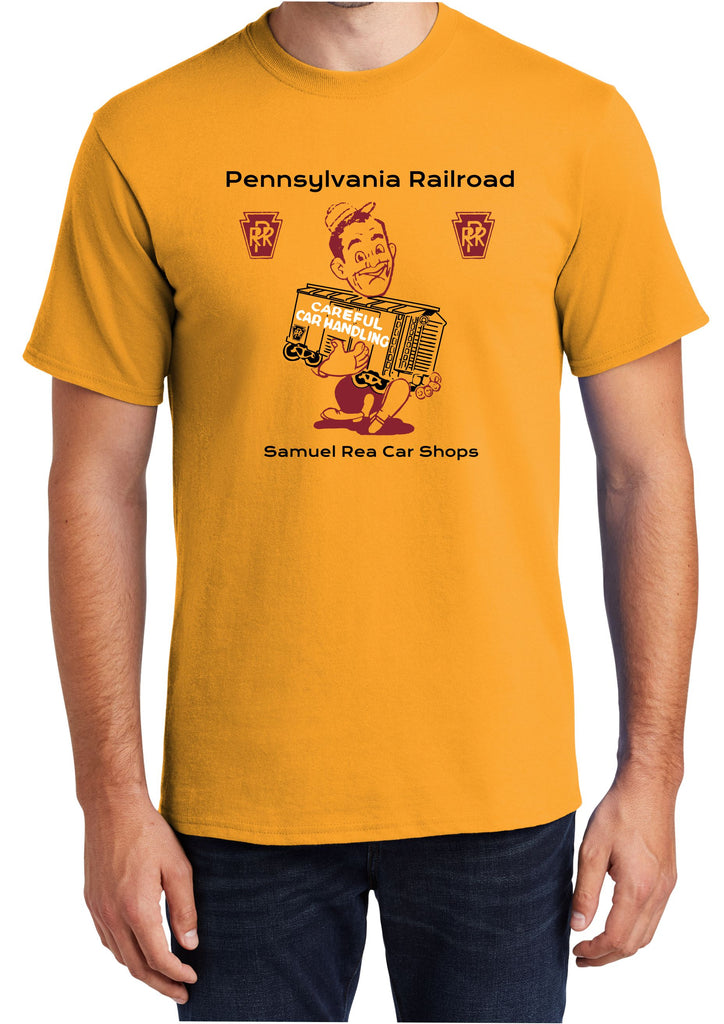
Pennsylvania Railroad "Samuel Rea Car Shops" Logo Shirt
Pennsylvania Railroad "Samuel Rea Car Shops" Logo Shirt
- Printed on Front
- 100% Cotton Gildan 6.1 oz
- Shirt Color - Gold
Please allow 10 business days to ship!
In the early years of the twentieth century, Pennsylvania Railroad (PRR) was America’s largest and busiest railroad. PRR was an empire of its own design, and it tended to do things its own way. The railroad was both a technological trendsetter and a maverick. It was a pioneer for both interlocking and block signal applications and developed its own distinct signaling practices. Not only did it operate more trains and more route miles than any other railroad, but it had some of the most complex signaling demands as a result of its numerous junctions, multiple track lines, and great variety of traffic using common tracks.
The position light signal was Pennsylvania Railroad’s clever hardware solution for two philosophical problems prevalent in American signaling practice at the time of World War I. PRR’s signal engineer A. H. Rudd was among the most influential men in early twentieth century North American signal practice.
Born in a distinguished family and educated at Yale University, Rudd had worked for a variety of America railway companies and was one of the earliest American members of Britain’s Institution of Railway Signal Engineers. He had enjoyed a guiding influence in the development of many standards embraced by the Railway Signal Association and American Railway Association and was an early proponent of the adoption of the three position, upper-quadrant semaphore and encouraged applications of this signal for speed signaling—a key PRR methodology.
Rudd articulated this concern in a paper (reprinted in October 1913 The Signal Engineer): Signals are divided into four classes—stop,caution, proceed and permissive. . . . The permissive signal is probably needed more on the Pennsylvania than any other road. The great majority of the roads of the country, under manual block, issue a card to enable the engine man to pass a stop signal to enter an occupied block. We give a signal for it. We do not permit a passenger train to enter an occupied block; we do not permit a freight to enter a block occupied by a passenger train; and this practice has been pretty well extended, so that as a general rule on some divisions preference freight is run under absolute block. We have felt it necessary to indicate to the engine men of fast trains, which are not permitted to accept a permissive signal, a difference between that signal and an ordinary caution signal. It is a stop signal to them, and it must be different from the ordinary caution (distant) signal, which they can accept.
